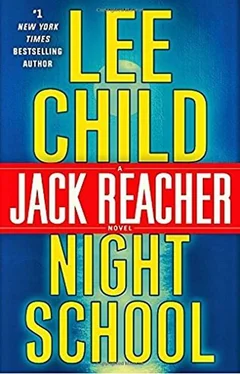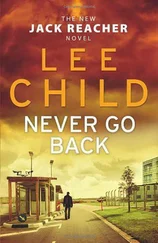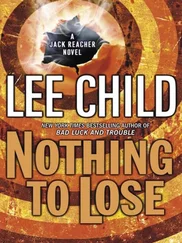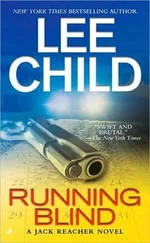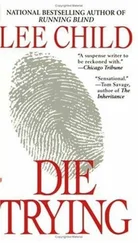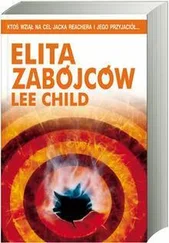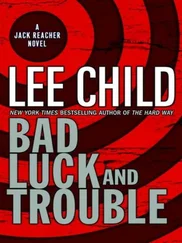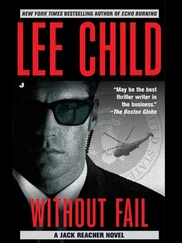“Yours or mine, major?”
“A sergeant named Arnold P. Mason. He served in an 82nd Airborne unit. Your path and his crossed in 1955, and a couple of times later. But only technically. You were moving up by then. You won’t remember him.”
“I don’t. It was forty years ago.”
“But we need to know what you remember about his unit.”
“What is this, a folklore project? Oral history month?”
“We’re looking at a guy named Wiley. As a kid growing up, for a six-year period, from the age of ten to the age of sixteen, his mother’s boyfriend was a twenty-year veteran of the 82nd Airborne in Europe. We think the boyfriend told the kid stories. We think the kid remembered the stories, and then many years later joined the army himself, because of them.”
“That’s how it’s supposed to happen. I’m glad to hear it.”
“It wasn’t like that with Wiley. It was like the stories were a treasure map, and he joined the army only because he wanted to dig up the treasure.”
Helmsworth said, “That’s absurd.”
“Now he’s got it and he’s AWOL.”
“Got what?”
“We don’t know. But it’s worth a lot of money.”
“AWOL from where?”
“Air defense with the armored divisions near Fulda.”
“Major, why am I here? Please tell me you had a good reason for bringing me to Europe.”
“We want to hear the buried treasure stories. From that old 82nd Airborne unit. We’re sure you remember them. Every officer remembers his first command.”
“There were no buried treasure stories.”
“Our boy Wiley got in a unit competition over smart-mouth one-liners about why they joined the army. When his turn came he said because his uncle told him Davy Crockett stories.”
Helmsworth didn’t answer.
Reacher noticed.
He said, “The uncle was really the mother’s boyfriend. The twenty-year veteran. Uncle Arnold. A polite honorific. Possibly appropriate when the kid was ten. Maybe a little weird by the time he was sixteen.”
Helmsworth said, casually, “What were the Davy Crockett stories?”
“We don’t know,” Reacher said. “That’s why we’re asking.”
“What years did the mother’s boyfriend serve?”
“From 1951 through 1971.”
Helmsworth was quiet a long moment.
Reacher said, “General?”
“I can’t help you,” Helmsworth said. “I’m very sorry.”
Reacher said, “How mad are you now?”
Helmsworth almost answered, but then he stopped himself short.
“Exactly,” Reacher said. “A one or a two out of ten. You’re no longer angry. Because now you’ve got bigger things to worry about.”
Helmsworth said nothing.
Reacher said, “General?”
Helmsworth said, “I can’t discuss it.”
“You’ll have to, I’m afraid.”
“I mean I’m not permitted to discuss it.”
Sinclair said, “General, with respect, you’re talking to the National Security Council. There is no higher level of clearance.”
“Is this room secure?”
“It’s in a United States consulate and it was selected by the CIA head of station.”
“I need to speak with the Joint Chiefs’ office.”
“On this issue they’ll say what we tell them to say. Why not cut out the middleman and tell us direct?”
“It was classified a long time ago.”
“What was?”
“It’s a closed file.”
Reacher said, “Tell the story, general. Our boy Wiley is AWOL with stolen material. We need to know what it is. We’re going to sit here until you tell us. I’d like to say we’ve got all day, but I’m not sure about that. Maybe we haven’t.”
Helmsworth paused again.
Then he nodded. He hitched his chair in and sat forward. He said, “I’ll tell you what happened to me, and then I’ll tell you what else was going on. This was Europe in the early 1950s. We knew the battle plan. The Red Army would advance through the Fulda Gap in strength and depth. Our first job was to stop their spearhead and then prevent reinforcement. Which we planned to do by targeting roads and bridges behind their lines. To halt their incoming armor. Maybe also power plants and other large items of infrastructure. To degrade their capability. Except the Air Force was unreliable. Back then there were no smart bombs. A bridge is a very small target. We needed certainty. We raised a couple of engineer companies. They were regular combat paratroops trained in demolition. The idea was they would jump with an explosive charge, and hike or if necessary fight from the landing zone to the target, and affix the charge with great precision, to the bridge support or the power plant wall, or whatever it may be. That was the plan. Back then a paratrooper with an explosive charge on his back was the smartest bomb we had.”
“Good work,” Reacher said.
“Not really. What’s the maximum they could carry on their backs?”
“From an LZ to a target? A hundred pounds, maybe.”
“Which was the problem. A hundred pounds of TNT doesn’t put a scratch on a bridge support. It’s a firecracker. And a power plant is even bigger. So we put the human smart bomb technique on the back burner for the time being. Pending improvements to portable ordnance. Which were generally slow back then. The glamour was all at the other end of the scale. Which was the stuff I didn’t know at the time. Los Alamos was busier than ever. They were working on the hydrogen bomb. They tested it just before I graduated West Point. On Bikini Atoll, in March of 1954. It was a fifteen megaton explosion. By far the most powerful in all of recorded history. It was five times more powerful than all the bombs dropped on Germany and Japan in World War Two put together, including the atom bombs we dropped on Hiroshima and Nagasaki. Probably more powerful than all the ordnance ever exploded in the whole world before. All in one split second. It was a big-ass explosion, people. So big no one ever seriously thought about going bigger. They thought the atmosphere would catch on fire. Not that I knew any of that stuff at the time.”
Reacher said, “When did you find out?”
“Later in the 1950s. Things were going crazy by then. We found out other things, too. For example, we found out we had two secret nuclear labs, not just one. Not just Los Alamos. There was another place. They had a theory at the time. It was behind everything the Department of Defense ever did back then. In their words they believed rivalry fosters excellence and is imperative for supremacy. It was written in stone. So they gave Los Alamos a rival. It was called Livermore. Near Berkeley, in California. There were smart people working there right from the start. They saw there was no point in designing a bigger bomb. So they went the other way. They designed smaller bombs. They got better and better at it. Eventually they built a whole new nuclear weapons system around a very neat new warhead called the W-54.”
“Good to know,” Reacher said.
“Now go back to my original problem. A guy carrying a hundred pounds on his back was no good to me. But I was a commander with a tactical problem to solve. My target list included major civil engineering projects. Roads, bridges, viaducts, power plants, infrastructure. Could a guy carry two hundred pounds on his back?”
“Maybe,” Reacher said. “But not very far.”
“Still not good enough. Still just a firecracker. What about four hundred pounds?”
“No.”
“What about a ton? Could a guy carry a ton of TNT on his back?”
“Obviously not.”
“What about ten tons? Or a hundred tons? Or a thousand tons? Or fifteen thousand tons? Could a guy carry fifteen thousand tons of TNT on his back?”
Reacher said nothing.
Helmsworth said, “In the end that was what they offered us.”
Читать дальше
